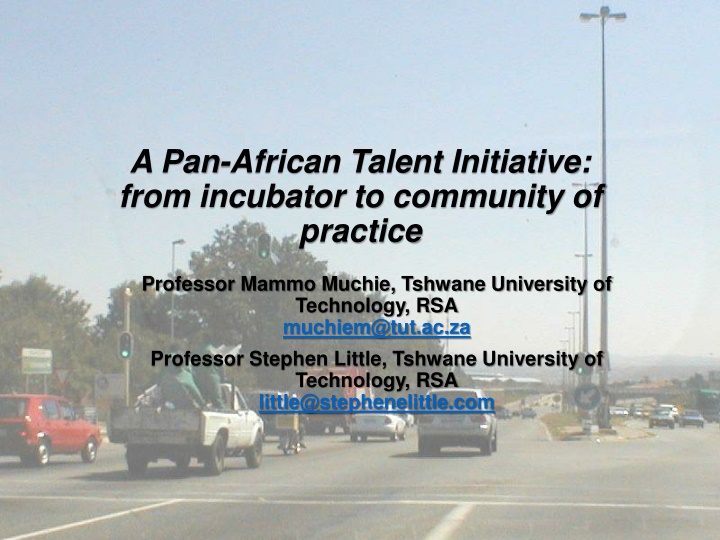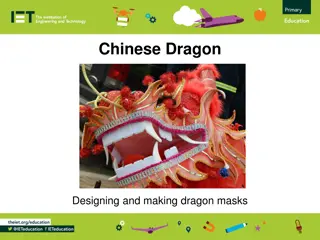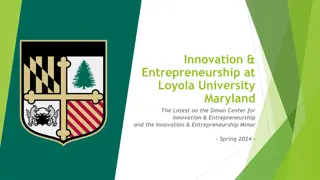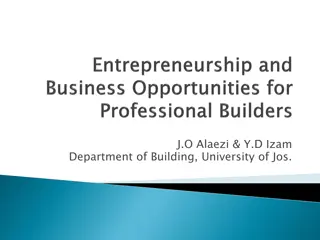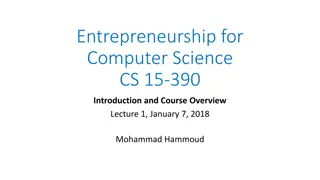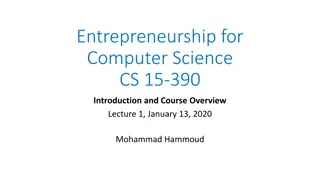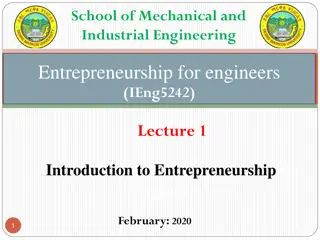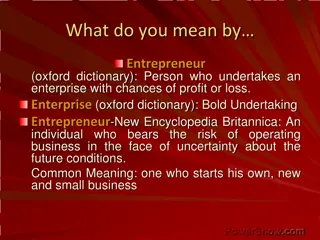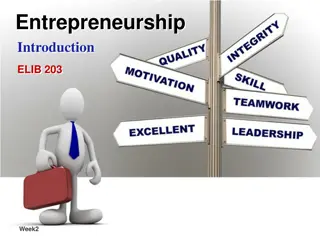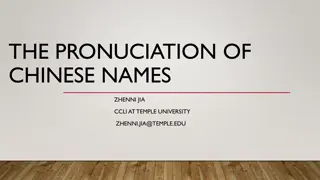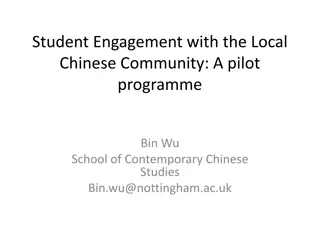Enhancing African and Chinese Entrepreneurship Learning Programs
Initiating a Pan-African Talent Initiative from incubator to community of practice to enhance entrepreneurial and employability learning programs in Africa and China. Addressing big problems via distributed open responses, emphasizing knowledge sharing, open innovation management, and the Triple Helix & Quadruple Helix models. Fostering a complementary helix approach to integrate scientific, technical, and creative skills for sustainable innovation and competitiveness.
Download Presentation

Please find below an Image/Link to download the presentation.
The content on the website is provided AS IS for your information and personal use only. It may not be sold, licensed, or shared on other websites without obtaining consent from the author.If you encounter any issues during the download, it is possible that the publisher has removed the file from their server.
You are allowed to download the files provided on this website for personal or commercial use, subject to the condition that they are used lawfully. All files are the property of their respective owners.
The content on the website is provided AS IS for your information and personal use only. It may not be sold, licensed, or shared on other websites without obtaining consent from the author.
E N D
Presentation Transcript
A Pan-African Talent Initiative: from incubator to community of practice Professor Mammo Muchie, Tshwane University of Technology, RSA muchiem@tut.ac.za Professor Stephen Little, Tshwane University of Technology, RSA little@stephenelittle.com
Vision Enhance entrepreneurial & employability learning programmes in Africa and China Learning together (Africa & China) to achieve sustainable development goals SDGs are big problems/wicked problems requiring distributed open responses
Facing the Challenges of Distributed Open Innovation Management ------ Governance Williamson (1975) and transaction driven view of organisation governance replacing management governance flows along the value chain disintermediation and re-intermediation Microsoft ----------- Open Software Foundation Cathedral ----------- Bazaar Raymond E.S. (2001) Information Distribution------------- Knowledge Sharing Hierarchies -------------------------------------- Distributed Communities of Practice
Triple Helix & Quadruple Helix Government Industry Academy Society Etzkowitz and Leydesdorff (1998) Characterises the nature of Mode 2 knowledge production set out by Gibbons et al (1994) and Novotny, Scott and Gibbons(2001) emphasises the need for continuous interaction and co- operation C21 requires a complementary helix to illuminate the potential interaction between the varieties of intellectual assets available within a geographic location.
A Complementary Helix scientific & technical skills creative sectors entrepreneurs creative sector positioned not as the basis of a milieu attractive to high value workers and investors (Florida 2002) but as a core component of the capacity to added value and develop competitiveness. Innovation can proceed not only from the application of scientific and technical invention, but from by the creative synthesis of new principles into attractive products and services delivered via the entrepreneurial contribution of innovative business models. Skills sets required can draw on local specific cultures
PATI: a social enterprise with Tshwane University Tshwane University provides space for accelerator for university students seeking a path to entrepreneurship University-wide initiative to submit business plans and ideas for chance to be incubated; PATI s Enterprise Lab provides mentorship, business plan bootcamp, international connections and ongoing support Work with both commercial and social enterprise to put together best-in-class support mechanisms Connect the accelerator with corporate initiatives and seek to secure corporate and philanthropic support Secure seed funding/investment and set up further collaboration spaces, bringing academia, business and government together
Part 1: University enterprise spaces SUPPORT PARTNERSHIP Corporates Foundations Academics Government Individuals Shared Space Community Collaboration Skill and Knowledge COMMUNITY CULTURE SPACE Exchange Shared Services Collaborative learning and partnership The space brings supporters/investors to meet with African entrepreneurs; and explore collaborations and co-funding opportunities PATI could explore collaborations, co-funding opportunities, and bring partners and entrepreneurs from UK and elsewhere to visit Africa and interact with African talent. Page 7 An Overview
Part 2 Internships & work placements Find African Talent and promoting the programme Leverage partners to provide practical assistance Match talents with corporates and enterprises Provide training and mentorship support Monitoring and impact measurement Skill development and employment The hub will support talent development and employment through internships, work placements and the creation of employment. Entrepreneurs incubated would be given ongoing assistance to scale up and commercialise. This support ecosystem would ensure the skills of outstanding Africans that may otherwise be underemployed are used and retained in the country. This would require ongoing assistance from the Advisory Board, government and local entrepreneurs. Page 8 An Overview
Part 3: Seed funding programme social venture capital funds Investment ready scale-up social ventures Seeding stage, start up stage social ventures Scale-up Pipe-line building and connecting to external investors Parts 1 and 2 require philanthropic & corporate support. Part 3 would be a commercial venture seeking social impact & patient capital. Seed fund to provide Up to $50k pre-seeding stage, start up stage or early-stage social ventures Hands-on consultation and incubation for ventures Match with bigger funds externally Investment criteria could be Young entrepreneurs between the ages of 20 to 35 Equipped with innovative market-based solution for social/environmental challenges Dedicated to creating long term impact Advisory Board to help them internationalise Supported by a collaborative learning and partnership online platform An Overview Page 9
Collaborative Exploration Africa and China share a legacy of external intervention and patterns of development influenced by external interests China has demonstrated an alternative development pathway addressing uneven development with a dual circulation model for internal development and external trade Growing economic, technical and scientific collaboration between Africa and China offers the opportunity to co- develop mechanisms to provide the skill base to move from discovery to invention, innovation and implementation to the benefit of both
